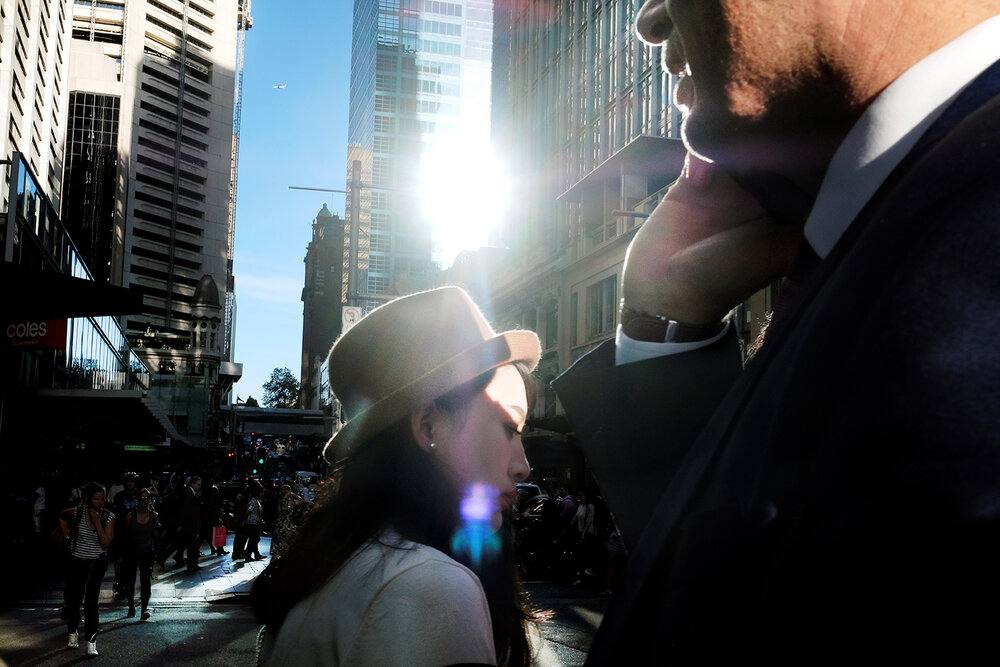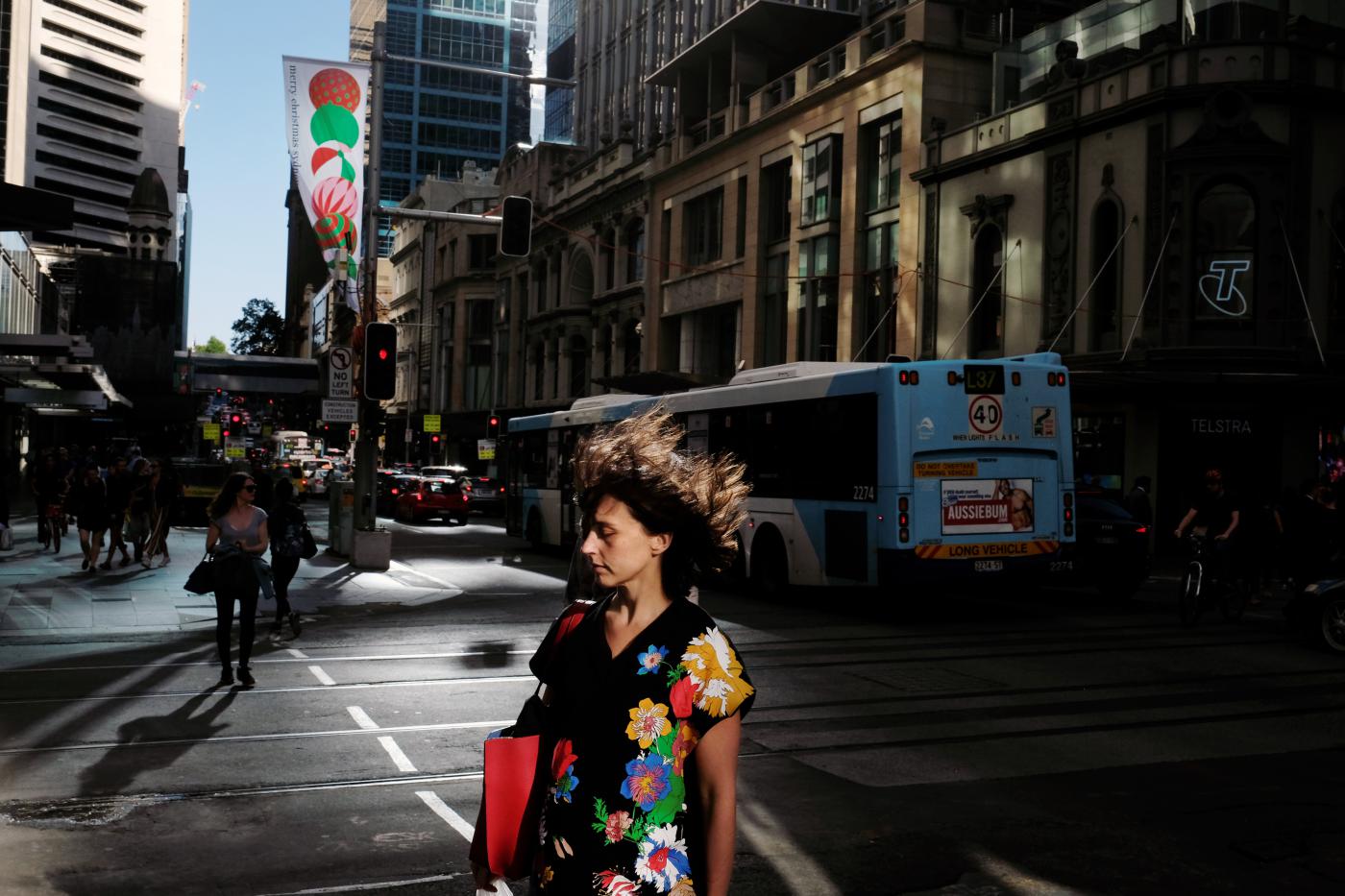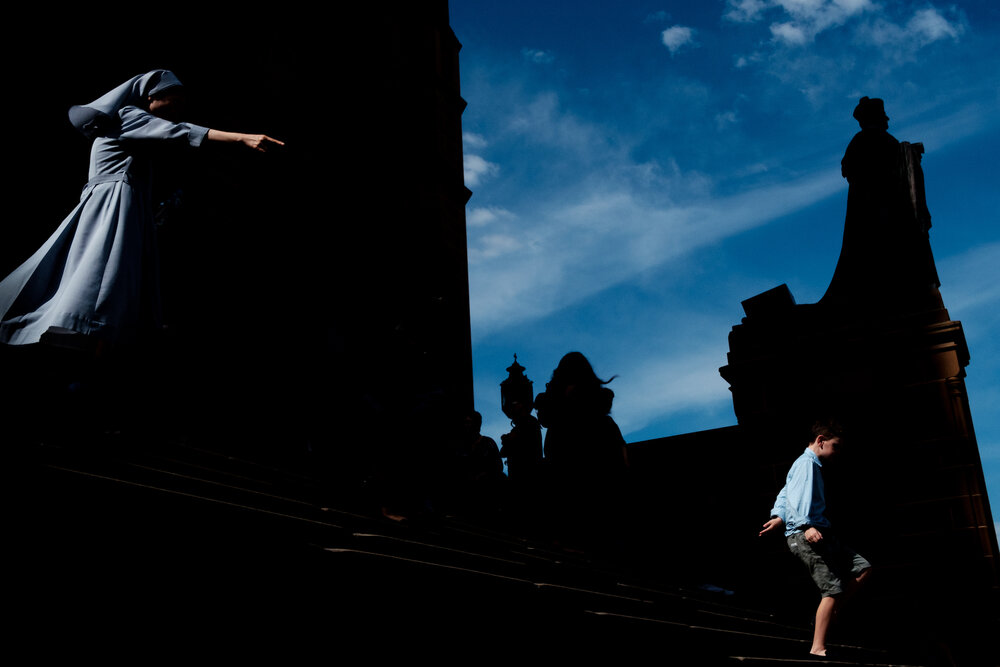Considering the immense effort and sheer front that’s required to become proficient at street photography, the popular genre rarely celebrates talent with financial reward.

Some of photography’s biggest names are known for candid street work. Legends like Henri Cartier-Bresson, Garry Winograd, Diane Arbus, Walker Evans, Martin Parr, and locally, Max Dupain and Trent Parke.
The street photography work by these folks, and many others, is treasured. It continues to be admired and studied, and has been acquired by both private collectors and public cultural institutions. Generations of photographers continue to be inspired by street photography, and may head out to look for their own ‘Behind the Gare Saint-Lazare‘.
Just don’t expect to make much money from it.
‘I don’t think anyone gets into street photography to make money, and if they are they’re bound to be disappointed because there’s not much going around,’ award-winning street photographer, Sam Ferris, told Inside Imaging.
While Sam maintains that street photography isn’t profitable, it can indirectly ‘lead to other opportunities and endeavours’.
‘I’ve landed advertising and fashion gigs because of my street photography. I’ve been a good fit too for weddings, events, and corporate jobs because of the skillset I’ve developed from years of shooting on the street,’ he said. ‘A photographer I know started shooting street, developed a great portfolio, and used it to get his foot in the door at portfolio reviews. He got a few assignments and did them well, and now works regularly for The New York Times and other major publications, making a living with his camera. In his spare time, he still shoots street.’
It makes sense that a street photographer’s skill set is transferable to commercial settings, given the craft is geared toward capturing natural candid moments. And candid photography is more sought after than ever before in commercially-viable sectors such as weddings and events, advertising, fashion, and shooting on TV/advertising production sets.
Sam has been shooting street photography for around a decade. His story is not unlike many others who have developed a passion for the genre in the internet age.
While on holidays overseas, he began sending snaps home to family and friends by uploading them to Flickr, which at the time was hugely popular among photography enthusiasts. Some of his pictures gained the attention of strangers, who complimented Ferris’ chops at shooting street.
‘I was like what’s that about, and it put me on a path to researching more about street photography, and discovering all these great photographers. I was inspired to work harder and push myself into it a bit more.’
Sam humbly describes himself as a ‘failed academic’ who now works as a high school teacher, and not a professional photographer. He’s a member of the international street photography collective, Burn My Eye, has had pictures exhibited in two group exhibitions at the Head On Photo Festival, was a finalist in the 2019 Moran Contemporary Photographic Prize, and scored other finalist positions in prestigious local and international photo contests.
He’s currently working on a few unfinished projects, including In Visible Light which explores the way light pours down and reflects throughout the streets of Sydney. The goal is to eventually display the completed project as a photo book.

‘As an English teacher, my background is in literature and reading. So storytelling and narrative is something I’m interested in, and the photo book ties into that process quite well. With a book I feel I can do more with these photos than just a single image, even if we’re always just looking for that great single image.’
Street photography thrives on the internet. There are numerous online communities in Australia that serve as an outlet to share pictures and receive feedback from peers. Before the social media era each city may have had a small dedicated scene, but the likes of Flickr and Facebook provided a platform to re-invigorate street photography.
Speculating on why people are drawn towards it, Sam describes street photography as both democratic and accessible.
‘Essentially, anyone can pick up a camera and take to the street. If you have an eye and camera, you can get out and do it,’ he said. ‘And viewers looking at street photography are seeing a record of a time and place. It has that value of historical or cultural importance – it’s a record of what things looked like at a particular time. Whether that’s fashion, architecture, cars on the road. Street photography is a really authentic and accurate representation of what things look like. It’s not altered or manipulated through staging.
‘Then there is the artistic merit to it. The photos by the old masters, like Henri Cartier-Bresson or Capa, stand the test of time because they are aesthetically constructed and pleasing. They follow the rules of art and painting.’
Aussie Street

In 2017, Sam and a few friends noticed overseas street photography festivals were promoting the genre and creating new opportunities.
‘We thought it would be a really beneficial thing to bring to Australia, which has a growing street photography community. To have a festival means we could create a hub to show and champion work, run a competition, and bring in some strong names to run events.’
In 2018 the inaugural Aussie Street ran a not-for-profit photo contest, judged by leading Melbourne street photographer, Jesse Marlow. The finalists’ images, along with a selection of other pictures, appeared in an exhibition at the 2018 Head On Photo Festival.
The following year Aussie Street returned as a fully-fledged international event, with industry sponsorship from Leica Australia, Rewind Photo Lab, Sandy Prints, and Comber Street Studios.
Two high-profile international guests – British photographer, Matt Stuart, and US photographer, Jorge Garcia – also ran workshops and gave presentations at Aussie Street.
‘To give that sense of community through Aussie Street was a key goal. We found each other mostly online and had that community, but there are people all around Australia who may be looking for it. There was a drive to make an organisation in Australia for this genre of photography that’s increasingly popular.
‘But it’s not a genre where anyone’s making lots of money, and this isn’t a professional organisation. So it’s nice to have something to show this is a real thing and it doesn’t have to be done in isolation.’
The team plan to bring Aussie Street back in 2021, and are in the early stages of planning.





A very interesting genre and Linda’s shot is a coup, candid or not.
Sam suggests no staging so I’m wondering how the candid nature of images works with anonymity of subjects on the street. The question of model release may arise?
Hi Geoff, yes indeed – no staging is one of the key tenets of the genre. And like most great street shots, Linda’s image is most definitely not staged. Unless the image is intended to be used for commercial purposes, a model release is not necessary. It’s the same documentary/ photojournalism. In Australia, there is no expectation of privacy in public places, so there isn’t really a question of anonymity either. Of course, you always try to be respectful and do no harm out on the street.
Cheers, Thanks for your reply Lee 🙂